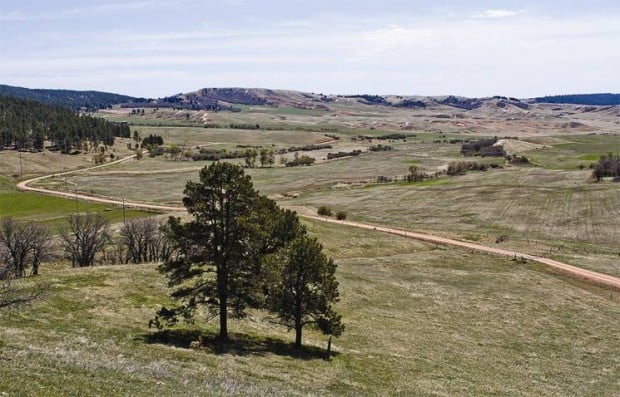The Bear Lodge Project has three main components: 1) construct and operate an open pit mine and associated facilities on National Forest system lands and private lands within the Bearlodge Mountains in Crook County, Wyoming; 2) construct and operate a hydrometallurgical plant for further concentration and recovery of rare earth elements on private lands in Upton, Wyoming; and 3) continue mineral exploration activities by drilling and trenching on the Bearlodge Mountains, Wyoming. [press release, Black Hills National Forest]More Canadians are taking advantage of Wyoming's continued assault on the Black Hills. A mine intended to remove Bull Hill at the headwaters of the Beaver Creek drainage in the Bear Lodge could pollute the Belle Fourche and Cheyenne Rivers even worse than they are now.
More than 140 people attended the first public meeting held by the Black Hills National Forest to address the mine plan. If approved, it would be the second rare-earth mine in the U.S. Only two rare-earth mines exist right now outside of China – one in Australia and another in Mountain Pass, California. The mine would be about 6 air miles north of Sundance in northeast Wyoming and would cover about 1,700 acres in the Black Hills National Forest. The Forest Service is accepting written comments from the public on the plan until April 30. A draft environmental impact statement will be presented for public comment in the spring of 2015 with a final objection period in the winter of 2015. [Christine Peterson, Residents question safety of proposed rare-earth mine, Casper Star-Tribune]
At the Bear Lodge project public meeting in Upton, WY pic.twitter.com/S3IdP6W2t9
— Black Hills NF (@BlackHillsNF) April 16, 2014
The Sundance Times' Sarah Pridgeon tells readers:
Rare Element Resources has initiated a land exchange that, if approved by the Board of Land Commissioners, will allow the company to acquire 640 surface and mineral acres of State Trust Land near Warren Peak, adjacent to the planned Bull Hill Rare Earth Mine. In exchange, the State of Wyoming will acquire 400 acres of additional land in the Little Grand Canyon area, says Lisa Reinhart, Office of State Lands and Investments. The exchange will aid RER in its development of the Bull Hill Rare Earth Mine, allowing waste rock and low grade material to be stored after extraction from the Forest Service land upon which the mine will sit. The detailed analysis is now available for public review on the website at lands.state.wy.us and the comment period is open until March 15, while the final Board consideration date is anticipated for April 11.
AP Photo/Gillette News Record, Steve Remich from Rapid City Journal
The industry's rooters have been saturating the media with propaganda ahead of Congressional review of the Hardrock Mining and Reclamation Act. Comes this from Bloomberg's Jim Snyder:
"It's astounding in this time of trillion-dollar deficits that we aren't looking more closely at revenue off of public lands," Sen. Tom Udall, D-N.M., said in an interview. "This would be a very good place to do it." Rep. Edward Markey, D-Mass., estimated the U.S. could generate about $3 billion over 10 years with a 12.5 percent royalty and other fees on hardrock mining. In his 2013 budget, President Obama included a royalty rate of 5 percent for new mining operations.The SDGOP-owned Department of Ecocide and Natural Ruination has come under the eye of another state enterprise:
A report [pdf] submitted by state officials to the EPA cites 166 lakes and streams in South Dakota as polluted or impaired. The bodies of water fail to meet government standards for clean water. Most of the polluted waters in South Dakota are due to non-point sources such as livestock waste. [Charles Michael Ray, Bill Janklow's idea of public radio]
Mercury levels in individual fish at some parks in #Wyoming also exceeded the human health criterion. http://t.co/O7Y0mvkqRX
— interested party (@larry_kurtz) April 16, 2014

No comments:
Post a Comment